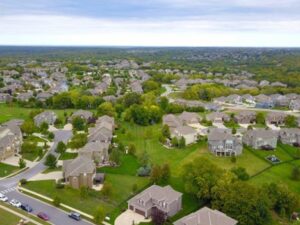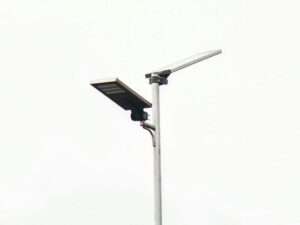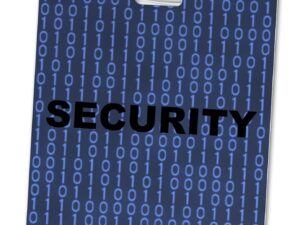
The history of motion activated sensors for alarms can be traced back to the 1950’s when New York inventor Samuel Bagno used his knowledge of radar from World War II to develop the first motion sensing alarm. It didn’t take long for motion activated security lights to follow and they are now common place. The logic behind deploying security lights is simple:
 Many burglars, trespassers, and other assorted intruders, like to operate under the cover of darkness. In simple terms – they don’t like “good people” to see what they are up to. Illuminating an area such as an entry way, walkway or parking lot sends a powerful psychological message to would be intruders that they will be noticed.
Many burglars, trespassers, and other assorted intruders, like to operate under the cover of darkness. In simple terms – they don’t like “good people” to see what they are up to. Illuminating an area such as an entry way, walkway or parking lot sends a powerful psychological message to would be intruders that they will be noticed.
Industrial-grade motion lighting system are quite good. They provide a long detection area and the motion detector can sense 180 degrees side-to-side and 360 degrees up and down. They are either “Active” motion sensors that send out a signal and when something blocks that signal the sensor is triggered. Or, they are “passive” motion sensors. Passive sensors pick up infrared signals emitted by body heat. If the sensor notices infrared energy, the motion detector is triggered and the light turns on.
But the common motion activated “passive” residential flood lights used on most garages, walkways, and small buildings leave a lot to be desired. Some of these lights have such anemic illumination that they don’t really have the capability to sufficiently light up a dark sidewalk, driveway, or even a dark area of a yard.
Along with the low illumination, many are timed to only illuminate for a few seconds once motion is no longer detected. They might give a homeowner some sense of security but they don’t offer much of a deterrent effect on an intruder or just some ne’er-do-well cutting across the property.
Security Lights that Track the Intruder
Technology always moves forward and motion activated security lights that not only illuminate once the sensor is triggered but also track the target with the light have been around for a number of years. But only recently has the technology advanced to the point that these motion activated tracking security lights have become affordable for the average homeowner or small business person.
 Now days for somewhere around $200 you can buy a decent easy-to-install motion activated flood light that will sufficiently light up an area once the sensor is triggered and it will also “track” the intruder with the light. This not only increases a sense of security but provides a greater deterrent effect. When an intruder realizes that they are being watched and tracked by the light, they are more motivated to quickly leave than if they just encounter a low-wattage security light that turns on for a few seconds and then goes dark.
Now days for somewhere around $200 you can buy a decent easy-to-install motion activated flood light that will sufficiently light up an area once the sensor is triggered and it will also “track” the intruder with the light. This not only increases a sense of security but provides a greater deterrent effect. When an intruder realizes that they are being watched and tracked by the light, they are more motivated to quickly leave than if they just encounter a low-wattage security light that turns on for a few seconds and then goes dark.
Motion Activated Tracking Security Lights as Part of an Overall Layered Security Approach
When I do security consulting, I often recommend motion activated tracking security lights as part of an overall layered security approach. There are a number of manufacturers and some are better than others depending on the location of deployment. Some have a “creeper” detection feature, decoy camera alert, and one even has a wireless alarm that notifies you when the camera is activated.
I have no connection with any particular manufacturer or vendor but have included links to two YouTube videos that show the features of two of these lights and how they work. https://www.youtube.com/watch?v=UAwUwKWuYQc & https://www.youtube.com/watch?v=e40GzGca69U
No security light can prevent or deter all crime. But a good quality motion activated security camera system that detects and sufficiently illuminates and tracks intruders can be a strong component of an overall layered security system. And, readers should be aware that sometimes using blue light, instead of the prosaic white or yellow light normally found in most security lights, can also pat a part in enhancing overall premise security. See previous article “Outdoor Security Lighting: Consider Going Blue.”




